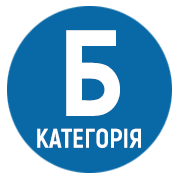VECTORIZATION OF MAPS OF RURAL SETTLEMENTS IN THE PREPARATION OF LOGISTICS WITH HELP OF GEOINFORMATION TECHNOLOGIES
DOI:
https://doi.org/10.25128/2415-3605.21.1.10Keywords:
logistician, Geoinformation technologies, laboratory work, vectorization, map, settlementAbstract
The article is devoted to the traditional sphere of application of Geoinformation systems – logistics and use of Geoinformation technologies in the process of preparation of future logisticians on the basis of the offered technique of carrying out laboratory employment with use of vectorization of a rural settlement map. It is claimed that Geoinformation technologies allow to present statistical information on maps and provide tools for processing spatial statistical information with taking into account its qualitative and quantitative properties. The reasons of efficiency of the mechanism of the decision of a logistic problem are defined, some widespread ways of optimization of logistic activity on the basis of the geographical approach are considered and the directions of its optimization are established. The main professionally necessary tasks that represent a valuable part of cartographic literacy of future professionals in the field of logistics are highlighted. Due to the priority of development and detailing the maps of urban settlements, there is a decrease in attention to rural and remoted areas, which, to some extent, creates some inconvenience in designing transport routes to the necessary points of location. The sequence of laboratory work on vectorization of the selected part of the map of the rural settlement is offered. Comparing it with the modes "Satellite" and "Map" and adhering to the selected fixed scale, additional graphic prompts are applied. This work is performed in the training of specialists in the specialty 015.38 Professional Education (Transport) at Ternopil Volodymyr Hnatiuk National Pedagogical.
References
Bykov V. Yu. Innovative tools and promising areas of informatization of education. ICT in modern education: experience, problems, prospects. III between the people. scientific-practical conferentsia. Lviv: LSU BJD, 2012. Part 1. P. 14–26.
Grishchenko S. M., Morkun V. S., Semerikov S. O. The use of geoinformation technologies in the training of G-85 mining engineer: monograph. Kryvyi Rih: Publishing Center of KNU, 2015. 279 p.
Zamora Ya. P., Burega N. V. Working program «Geoinformation technologies of transport management» for students in the direction of training 015.38 “Professional education. Transport”. Ternopil: TNPU named after Volodymyr Hnatyuk, 2020. 14 p.
Lakhotska E. Ya. Basics of cartography. Textbook for full-time and part-time students majoring in 193 «Geodesy and Land Management» educational qualification level, bachelor and junior specialist. Uzhhorod: UzhNU, 2017. 79 p.
Galton A. Spatial and temporal knowledge representation. Earth Science Informatics II. September 2009. Vol. 2. Issue 3. P. 169–187.






